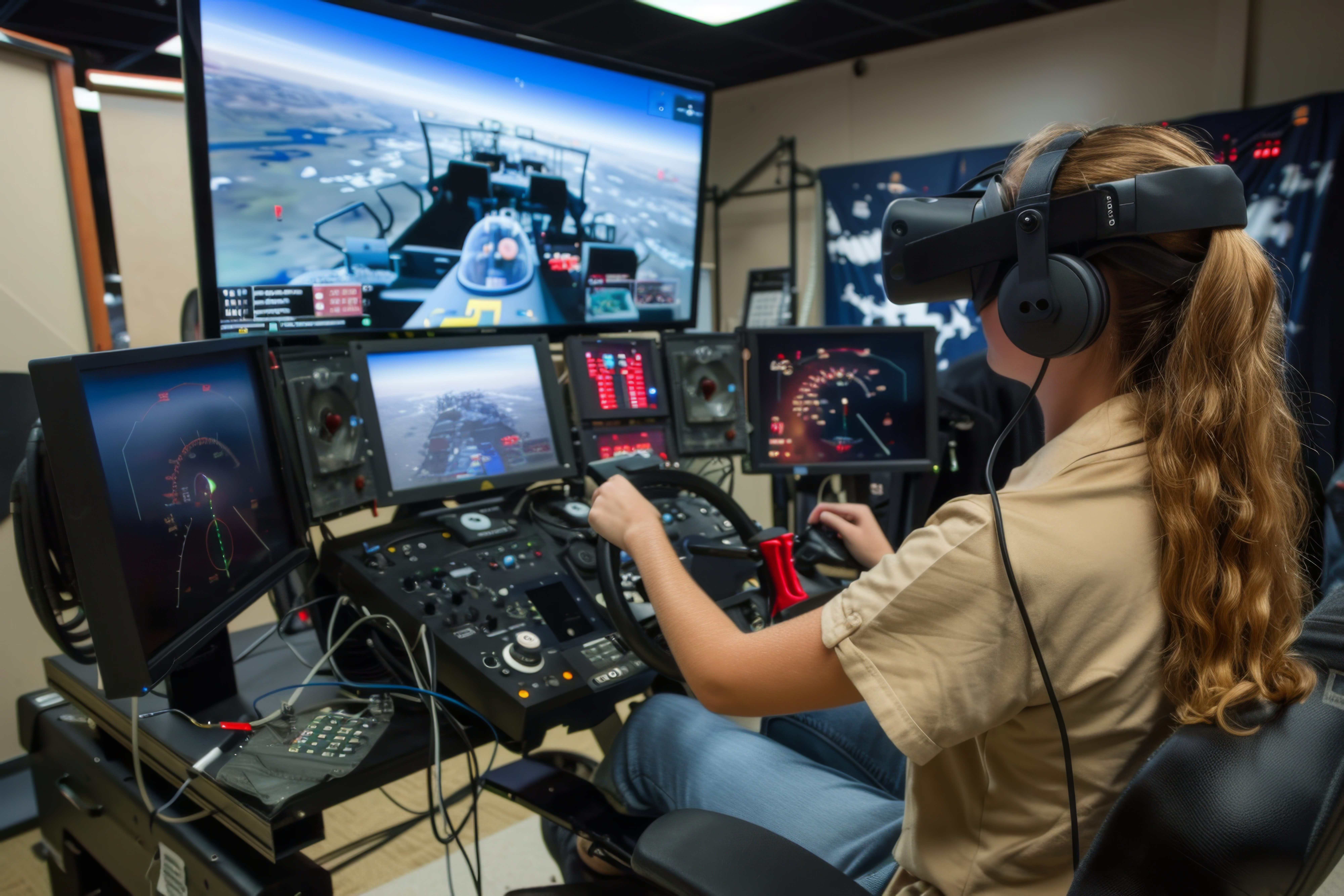In today’s dynamic business landscape, where remote work and digital learning have become the norm, organizations are increasingly turning to virtual reality (VR) training to transform their training and development initiatives. This article delves into the world of virtual training platforms, exploring their benefits, applications, and impact on learning outcomes.
Key Takeaways
- Virtual training platforms, powered by VR technology, offer immersive and engaging learning experiences that enhance knowledge retention and engagement.
- VR training is particularly effective for remote teams, providing a virtual classroom experience that simulates real-world scenarios and interactions.
- While VR training requires specialized tools and equipment, the benefits in terms of learning outcomes and cost-efficiency are significant.
- Understanding the distinctions between e-learning platforms and VR platforms is crucial for organizations looking to adopt digital training solutions.
Understanding Virtual Reality Training
Virtual reality training is a cutting-edge approach that leverages immersive technology to simulate real-world environments and scenarios for training purposes. Unlike traditional training methods, which often rely on static presentations or classroom settings, VR training offers a highly interactive and engaging experience via a virtual training platform.
Related Article: Unleashing Creativity: Virtual Brainstorming In Immersive VR Workspaces
What is a Virtual Training Platform
A virtual training platform is a software application or system that enables organizations to create, deliver, and manage VR-based training programs. These platforms typically include features such as customizable environments, interactive simulations, real-time feedback, and performance analytics.
Benefits of Virtual Reality in Training
- Engagement: VR training provides a high level of engagement by immersing learners in realistic environments where they can interact with objects and perform tasks, leading to better knowledge retention and engagement.
- Accessibility: With remote work becoming more prevalent, VR training offers a flexible and accessible solution that allows learners to participate from anywhere, reducing logistical constraints and costs associated with in-person training.
- Skill Development: Virtual reality enables hands-on practice and skill development in a safe and controlled environment, allowing learners to make mistakes and learn from them without real-world consequences.
- Cost-Efficiency: While VR training may require an initial investment in hardware and software, it can ultimately lead to cost savings by reducing the need for physical training facilities, travel expenses, and instructor fees.
- Scalability: Virtual training platforms can easily scale to accommodate a large number of learners simultaneously, making them ideal for organizations with diverse training needs and global workforces.
Related Article: Elevating Customer Support with Virtual Reality Assistance
Utilizing VR for Remote Training
One of the primary applications of VR training is in remote training scenarios, where employees are geographically dispersed or unable to attend in-person training sessions. VR technology bridges the gap by providing a virtual classroom experience that closely mimics real-world interactions.
Enhancing Learning Outcomes with VR Training
Research has shown that VR training can lead to significant improvements in learning outcomes. By engaging multiple senses and providing interactive feedback, VR simulations promote active learning and knowledge retention. Additionally, VR training can be tailored to individual learning styles and preferences, allowing for personalized learning experiences. This makes it an ideal training tool since it caters to the learning needs of all participants.
Exploring Remote Training Solutions with VR
There are various remote training solutions powered by virtual reality across industries such as healthcare, manufacturing, aviation, and customer service. For example:
- In healthcare, VR training is used to simulate surgical procedures, patient interactions, and medical emergencies for healthcare professionals.
- In manufacturing, VR training helps employees learn equipment operation, safety protocols, and maintenance procedures in a virtual factory environment.
- In aviation, VR training simulates cockpit scenarios, emergency procedures, and flight simulations for pilots and aviation personnel.
- In customer service, VR training enables employees to practice communication skills, conflict resolution, and product knowledge in virtual customer interactions.
Tools for Engaging in VR Training
To participate in a virtual reality training program, learners typically require the following tools and equipment:
- VR Headset: A VR headset is the primary hardware used to immerse learners in virtual environments. These headsets come in various models, including tethered headsets connected to a computer and standalone headsets with built-in processing capabilities.
- VR Controllers: VR controllers allow learners to interact with objects and navigate virtual environments. They provide haptic feedback and motion tracking for a more immersive experience.
- VR Software: Virtual training platforms use specialized software to create and deliver VR content. This software includes authoring tools for content creation, learning management systems (LMS) for course management, and analytics dashboards for tracking a learner’s progress.
- Computer or Mobile Device: Depending on the type of VR headset used, learners may need a compatible computer or mobile device to run VR applications and simulations.
Difference Between E-Learning and VR Platforms
While both e-learning platforms and VR platforms fall under the umbrella of digital learning technologies, there are key differences between the two:
- E-learning platforms typically deliver training content through online courses, webinars, and multimedia presentations. They are often text-based and rely on visual and auditory content for learning.
- VR platforms, on the other hand, offer immersive and interactive experiences that go beyond traditional e-learning methods. They leverage 3D environments, spatial audio, and gesture-based interactions to create realistic training simulations.
Virtual reality training platforms represent a paradigm shift in how organizations approach training and development, offering a dynamic and impactful learning environment that drives performance and skill acquisition in remote settings.






